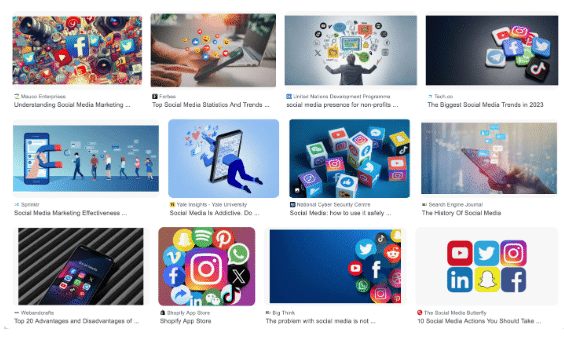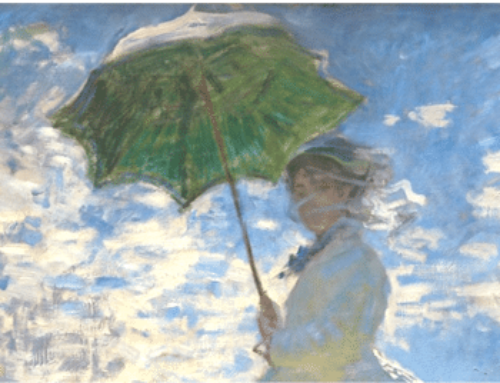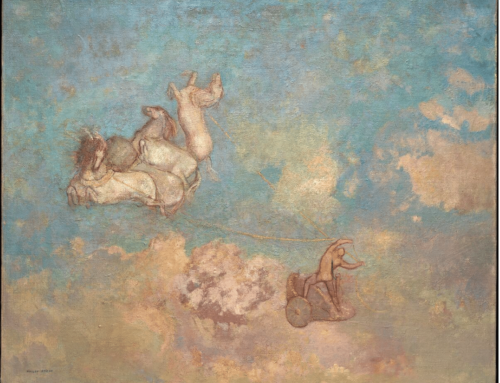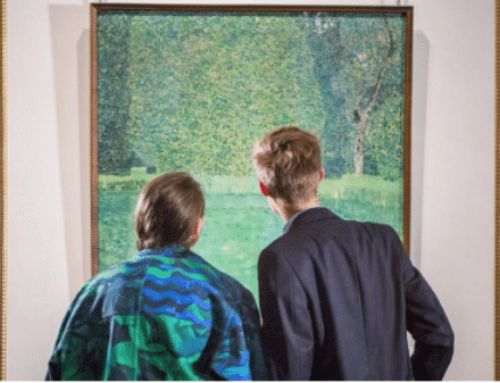“No man has the right to dictate what other men should perceive, create, or produce, but all should be encouraged to reveal themselves, their perceptions and emotions, and to build confidence in the creative spirit.” – Ansel Adams
Social media has transformed the creative landscape. Perhaps the best thing it’s done for artists is to upend old elitist rules about who gets to be an artist and who doesn’t. It’s great for seeing what’s out there, too. Following a diverse range of artists exposes you to different styles and mediums you wouldn’t have known about otherwise. Inspiration is popping up all over the place; grabbing onto it can help broaden your horizons and spark new ideas.
That’s on a good day.
On a bad day, you can find yourself quite lost in a game you never even wanted to play.
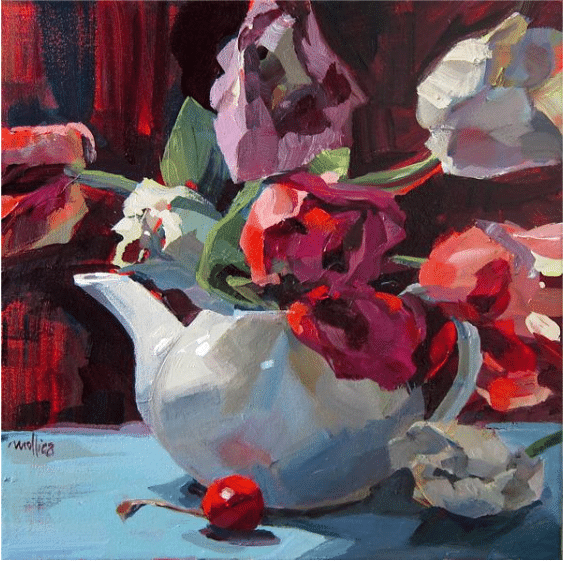
Patti Mollica, Summer Tulips, acrylic on canvas, 12 x 12 in.
It’s no wonder most of us now are almost utterly consumed by social media, hopping on and off for the dopamine drips multiple times a day, even letting it put us to sleep at night. We live in a digitally driven world, and social media has become an extension of our lives, very much including our live as artists and “creatives.”
One of its drawbacks though is that it promotes a kind of homogenization of styles and themes. It ends up being a popularity contest. As we know from high school, popularity isn’t as much about the person as it is about how good someone is at being popular.
Popularity is not about what’s “good.”
The thing is Popularity is about a bunch of people all saying they like something, or more often than not, someone. Social media comments, likes and wows, shares, number of views… these are not necessarily great yardsticks for what makes good art. And just because an artist has a large network of followers does not mean their paintings are worth copying.
Then there are the inherent limitations of the tech.
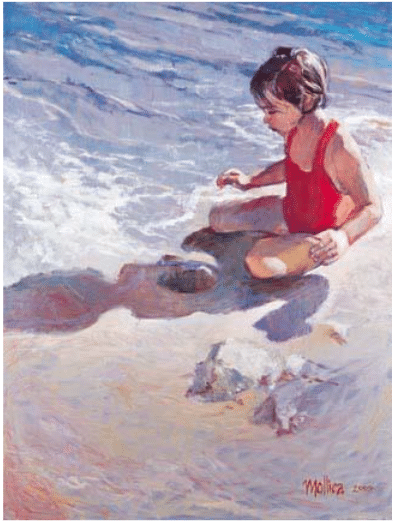
Patti Mollica, Caroline, acrylic, 40 x 30 in.
Algorithms favor regular posting and certain kinds of work and not others, pushing artists to create more popular content at a faster pace: Great for “influencers,” I guess, but not for artists who need time and contemplation to make quality work. Being online A LOT, posting religiously, interacting with people, creating stories and video content…. Keeping eyeballs on your steady stream of click-worthy work can become an (unpaid) fulltime job (after all it’s marketing, and that’s a job). And just like in the real world, as quantity reaches assembly line proportions, quality – and uniqueness, supposedly a hallmark of good art – goes down.
Also, your work appears and disappears in a flash. You get a like, but it amounted to about 2 seconds of someone looking at your work and then forgetting it. You’re just one of millions of artists on social media anyway – so your art, now called “content” – will be glanced at by a handful of busy people and, depending on your platform, will be around for a matter of minutes or hours at best before it disappears from view. . And the truth is, only a tiny percentage of your social media followers will actually be willing to pay for your art.
Because also, having a lot of followers does not mean you’ll sell more work. Look closely and you’ll see that plenty of creators with huge Instagram followings sell teeny amounts of work on Etsy.
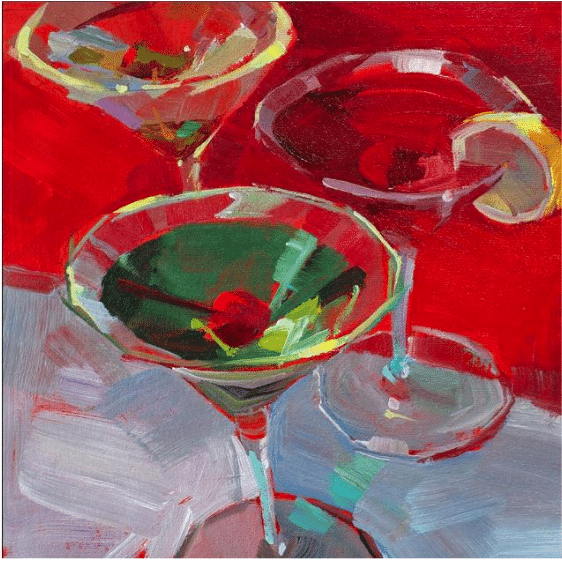
Patti Mollica, Party of Three, acrylic, 10 x 10 in.
If you’re not buying, you are the product
All the while, you and your work are simply feeding the big stream of free entertainment that social apps provide on their way to making millions in advertising off of your work (or maybe just your vanity). Not only that, eventually the platform will be abandoned, and you’ll have to start all over on a new one. Will you be able, or even willing to try, to go back to square one and “build a following” on the Next Popular Platform?
Man, how we do love the likes though. We long to be a part of the club, to be worthy ourselves of the showers of praise we see other folks getting! But even if successfully copying someone’s viral painting style gets you your own record number of likes, you’re not necessarily going to feel great about it. It’s good place to start, but… You’ll know, after all, you’re only being praised for your skill at copying someone else’s skill. And when you do, that’s the signal that you have to look away.
Learn the techniques, master the materials, and absolutely copy other paintings and artistic styles and share the results with the world! Just don’t get so addicted to the popularity machine that it ends up replacing freedom, experimentation, enjoyment, expression, or risk, or stands in for the reason you paint.
The best thing you can do is keep making your very best work as best as you can and keep getting it seen in as many ways and as often as you can – online and off. Having a decent website and keeping in touch via an email list are still arguably the best ways artists can use the Internet to grow their careers.
“Great painting is not about the subject matter, but rather the way an artist communicates beauty, sensitivity and integrity in whatever is depicted,” says acrylic painter Patti Mollica. Patti teaches acrylics in a series of videos divided into color, values, and brushwork. Check them out here.

